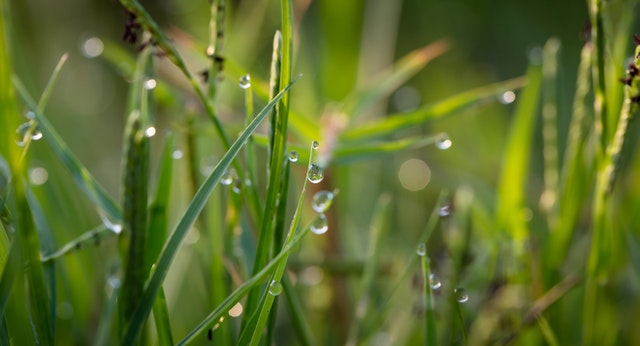
When it comes to grass, there a lot of things that could be affecting the colour; the conditions are too dry, too wet, to much sun, not enough sun, so on and so forth. With so many potential variables, it can make it pretty difficult sometimes to know exactly why your grass is looking a little yellow, or what you should be doing to help it recover.
Read on to see some of the most common causes for grass discolouration, followed by some tips and suggestions as to what you can do to keep your grass looking as green and vibrant as possible!
Why Is My Lawn Discoloured?
Sunlight, Drainage, Moisture.
The holy trinity of grass care is SDM; Sunlight, Drainage, and Moisture. If your lawn is looking a little worse-for-wear, maybe the answer why is the simplest and most obvious; your garden is being neglected in one of these areas. Ensure your garden is receiving appropriate amounts of sunlight, drainage, and moisture balance.
Tips for Keeping Your Lawn Green
We’ve already identified that SDM are common issues in garden health, but what can you do to improve these conditions and keep your lawn fresh and green?
1. Sunlight
Any grass that's deprived of sunlight for long periods of time will wilt and wither. Especially living in the UK, I think we all wish at times we could control the sun and command it where we'd like it to shine! Unfortunately, that’s not possible, but there are things we can do to allow our gardens to get more natural light.
Clear away debris and natural waste that builds up in your garden, like dead leaves. Trim back your hedges, bushes, shrubs, and trees to minimise shadows.
Whilst lack of sunlight can affect grass health, so can overexposure to sunlight. If the weather is particularly hot and your grass is looking brown and dehydrated, there are a few things you can do to rectify the situation. One such thing is to not mow your lawn too short; having longer grass provides shade to your soil, and more importantly, the roots of your grass. Providing cool shade prevents overheating and dehydration. The negative effects of excessive sunlight can also be tempered with carefully managed watering; see the moisture subheading for more information.
2. Drainage
Throughout the course of its life, your lawn will be constantly walked on. This pressure causes compression, and compacted soil leads to bad drainage. This is a relatively easy fix; it is recommended that twice a year you aerate your lawn; you can do this by spiking holes in your lawn with a gardening fork or a slitter. It is recommended that you pierce holes at least 3cm deep. Making holes in the lawn allows for airflow back down through your soil, which over time will gradually release some of the compression that's built up in your compacted soil.
Our Aeration Service
3. Moisture
Overwatering and underwatering can both be problems that damage your grass, so it’s important to find that perfect balance. When the weather is particularly hot, it's advisable to water your garden early in the morning, ideally between the hours of 6 - 10 am. This benefits your lawn by reducing water evaporation, allowing your plant life to absorb as much of the water as they can. Keeping your grass longer also provides shade to the grassroots, which helps resist evaporation and dehydration.
If your lawn is suffering from too much moisture, it's important to keep on top of drainage and avoid overwatering.
Read More: How Often Should I Water My Grass?
4. Feed your lawn!
One simple step you can take that will give the health of your lawn a boost is to feed your lawn. Adding fertiliser to your water mix and delivering it during regular watering is a good way to keep a steady supply of nutrients coming to your garden, without overwhelming it. It's also recommended to do a full-scale fertilisation around four times a year; once in the spring, twice in the summer, and once in the autumn.
Our Fertiliser Services
Why is my lawn discoloured?
If you’re looking more information on the various causes of yellowing and browning grass, check out the link below. This webpage has a comprehensive list of the symptoms, causes, and solutions of grass discolouration. If you’re struggling to identify the cause of your lawn discolouration and you’re at your wits' end, maybe it’s time to call in the professionals.
Why Is My Lawn Yellow?
Lawn Weed Expert can offer you a no-obligation lawn survey where our professional surveyors will assess your lawn and inform you of what problems you’re dealing with, and will let you know what exactly we can do to help.
Free Lawn Survey